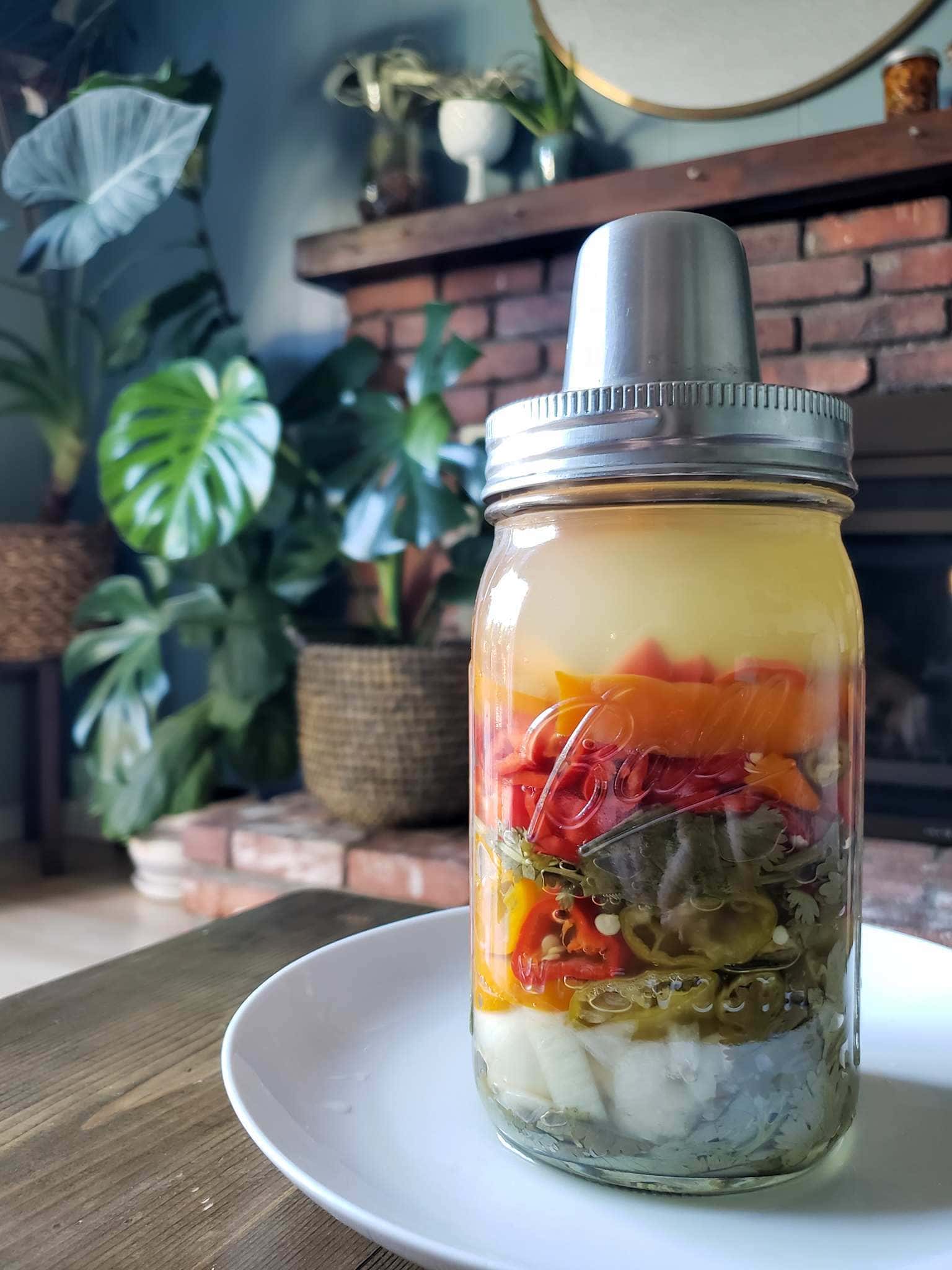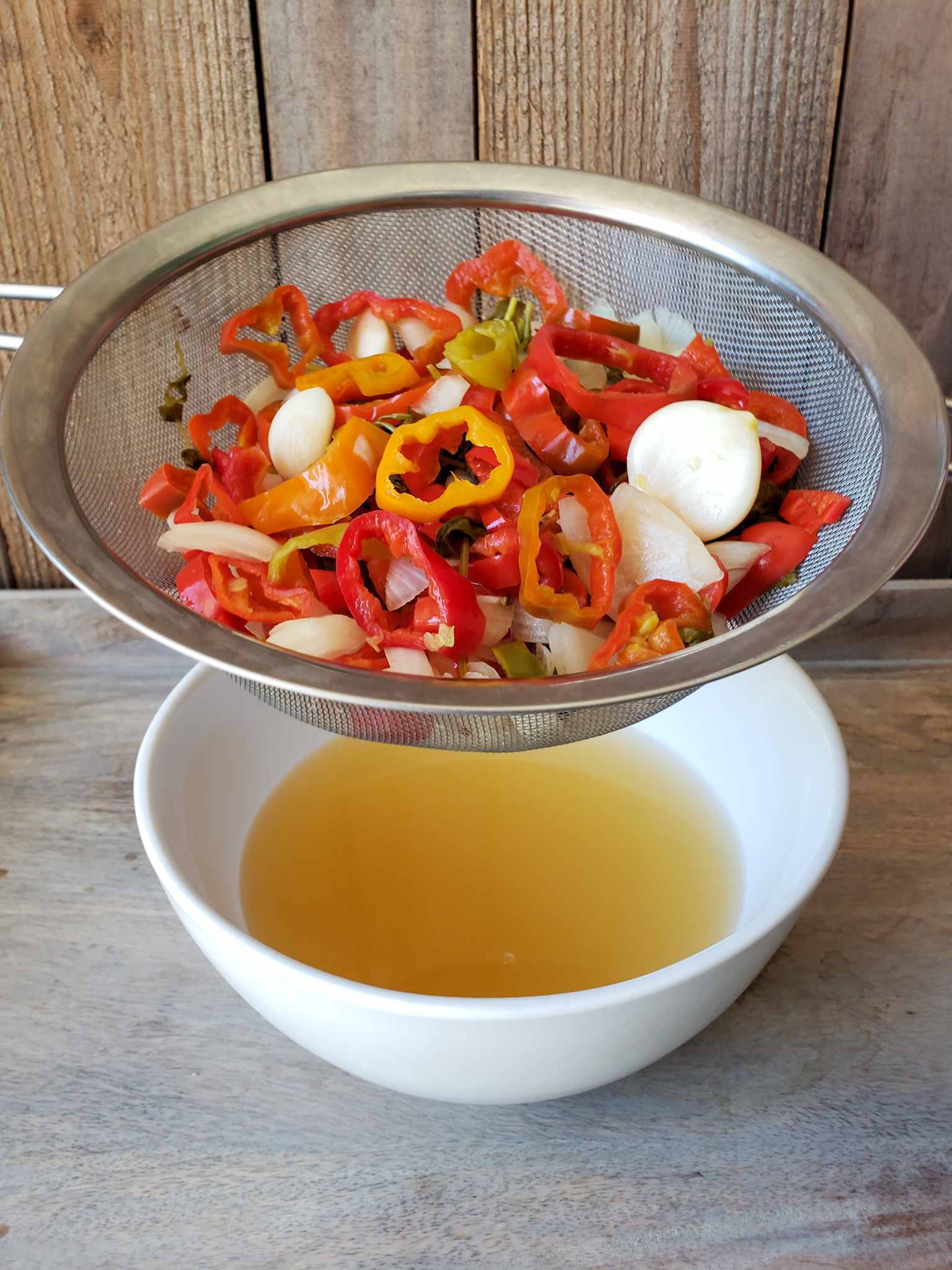Home»Food & Ferment»Preserve Your Harvest
Last update on July 11 , 2024
involve a niggling excess spice in your lifetime , or a fun way to preserve homegrown peppers ? Come hear how to make fermented red-hot sauce with this simple step - by - step templet !

Even if you are n’t a Brobdingnagian fan of red-hot sauce or spicy nutrient , or have n’t splash around with fermentation much in the past , do n’t worry . This fermented pepper live sauce recipe is easy make , andeasy to tailorto your taste bud using any diversity of Piper nigrum you care to use . We often combine a mix of bothhot chili con carne and sweet peppersto make a nice balance of savor .
Honestly , I never wish hot sauce before … or racy foods for that affair . Now , homemade ferment blistering sauce is one of my go - to condiments . It ’s fantastic with tacos , tostadas , bollock , veggie burgers and more . It get to also makes afun giftfor the red-hot sauce lover in your life !
Would you like to save this?
We ’ll netmail this post to you , so you could come back to it subsequently !
I harmonise to receive e-mail updates .
Disclosure : Homestead and Chill is proofreader - support . When you buy through nexus on our site , we may realise an affiliate direction .

What’s the difference between fermented hot sauce and regular hot sauce?
Fermented hot sauce is made by immix Piper nigrum , onion , and spices in a mildsalt water saltwater – not acetum . As the pepper souse in common salt H2O for a calendar week or longer , good lactic acid bacterium course present on the peppers multiply and turn down the pH of the seawater . Thus , the lacto - fermentation appendage efficaciously preserves the raging sauce AND introducesgut - hefty probiotic flora , making this fermented red-hot sauce recipemore nutritiousthan unconstipated blistering sauce .
In line , traditional ( sweet ) hot sauce that is preserved with acetum is devoid of probiotics . It also tends to have an overpoweringly hot and single - banknote acetose tone . or else , the fermentation mental process transforms the sharp , blistering , often sweep over flavor visibility of chili capsicum into something farmore mild , complex , flavorful , tangy and tastythan any other hot sauce you ’ve ever tried !
Should I add vinegar to fermented hot sauce?
Some sept wonder if they should add vinegar to homemade ferment hot sauce once it ’s done fermenting , as some formula intimate to do this to potentially extend the shelf life . However , I do n’t find it necessary . Naturally lacto - fermented hot sauce without vinegar already has an incredibly retentive shelf life : well over a year when stored in the refrigerator .
Plus , adding too much acetum will halt the fermentation cognitive process and kill the good probiotic bacterium you worked so hard to produce ! That kill much of the role , if you ask me . Instead , we add a small dab offresh calcium oxide juiceat the ending of our work hot sauce formula – which give way it a nice lemonlike little zing , but is n’t strong enough to kill the good bacteria .
Ingredients
The follow constituent inclination fills aone - quartmason jolt for fermenting , and makesabout 16 ounces of finished raging sauceat the end . Scale up or down as needed , keeping the proportions similar . We routinely double the formula and make a half - gallon !
Adding other vegetables to fermented hot sauce
We ’ve made many fun variations of this sour hot sauce recipe over the years , using other vegetables in addition to peppers . Adding different vegetables creates even more complex and interesting flavors , so experience free to try out ! For example , we have addedcarrots or tomatillosfrom the garden .
To do so , just perplex with the same proportion ( 1 Egyptian pound of veggies / peppers ) per the other listed ingredients . For illustration , half a Irish punt of hot peppers plus half a pound of chopped Daucus carota sativa . I indicate thin out husk tomato in half or quarter . Everything will get combine together afterwards .
Supplies Needed
Instructions
Step 1: Prepare Peppers and Onions
Wash your pepper of pick . When preparing them , keep in mind that the goal is to suit as much veg affair into the jarful as potential , so I suggest tocut the peppers into slice or rings(depending on the size / shape of your pepper ) instead of leave them whole . Next , Robert Peel anddice the onioninto lowly piece as well .
To make your sour hot sauce more mild , you’re able to also core the peppers to remove most of the come and blank inner tissue layer . I also extremely suggestwearing gloveswhile work on with hot chili pepper !
Step 2: Pack the Jar
Step 3: Make and Add Salt Water Brine
On the kitchen stove top , combine2 cupful of sink in water system with 1 tablespoon of sea saltin a potbelly to create a childlike salinity water brine . The salt is what encourages a good ferment process and beneficial bacteria , while inhibit the growth of harmful pathogens .
Gently heat the water until the saltiness dissolves , but avoid overheating it . The brine want to beroom temperatureor scarce lukewarm by the time you add it to the jar . ( That say , you could also do this tone prior to the veg prep , allowing extra time for it to cool . )
Once the seawater has cool down to the desired temperature , pour it into the ferment vas until the peppers are completely enshroud with liquid . Gentlytap and wigglethe jounce or press down on the peppers to release zephyr pocket . Top off with more saltwater as needed after settling occurs .

Step 4: Cover with an Airlock Lid
When fermenting intellectual nourishment , it is authoritative to keep the veggie ( capsicum , in this case)submerged below the brine . This helps prevent the development of stamp . As the peppers turn , they will release gasses that require to escape from the jar . Ideally , those gases should be allowed to elude without interrupt the fermentation process or introduce raw atmosphere . This is where your weight and airlock lid get in handy !
Cover the tempestuousness vessel with your weight andairlock hat arrangement of selection . The stainless brand Kraut Source ferment twist we use has a spring and plate that do as a weight to keep the peppers submerged , along with a moat organization on the top of the hat that create an airlock . Thisall - in - one ferment lidfrom Ball accomplish the same .
Alternatively , you may expend a separate fermentation weight likethese deoxyephedrine weightsmade for wide - mouthpiece jar , ceramic versions , or even boiled stones . Then , tot up a separateairlock lidon top .

Step 5: Ferment
How long should hot sauce ferment? How do I tell when it’s done?
Now it ’s clip to let the peppers and lactobacillus do their thing ! position the fermentation vas in a temperate location to ferment for7 to 14 days . ( See more temperature note of hand below . ) Dark or light – does n’t matter ! Ours usually lives on the kitchen counter .
The shorter the unrest , the less “ developed ” and complex the flavor profile will be . However , the longer the ferment – the more chance there is to develop kahm yeast ( also explained below ) and get a little funky , especially in warm conditions .
As the capsicum work , the saltwater will convert from clear-cut tocloudy , the pepperscolorswill become more muted , things willcompactunder your weight , and will likely producebubbles .

Some fermentation vessels bubble so much that they overflow from the container . Therefore , we always set ours on a plate to catch any overspill . Also note that agitation ordinarily smell a spot smelly , but do n’t occupy – they taste good than they smack ! I promise .
What temperature should I ferment my hot sauce?
The idealistic zymolysis temperature for peppers and fermented hot sauce is about68 to 73 ° F . Other ferments do okay with temperature somewhat warmer , up to the 80 to 85 degree range , but capsicum pepper plant are more picky and prone to growing kahm yeast . Therefore , do your best to find oneself a position in the favorite image .
A note about kahm yeast
In too warm of conditions , the peppers in fermented hot sauce are prone to developing something calledkahm barm . Though not harmful , kahm yeast can create an off - putting aroma and flavor . It will appear as a thick livid layer of sediment on the bottom of the jarful , on the peppercorn themselves , or floating on the airfoil . A modest amount of white sediment or motion picture in wholly normal in any ferment . In contrast , too inhuman of temperatures can lead to improper fermentation and mould development .
Step 6: Strain and Blend into Hot Sauce
After 7 - 14 Day have passed , it is time to turn those fermented veggie chunks into fermented hot sauce ! To do so , localize a hunky-dory - mesh strainer over a bowl . Yes , over a bowl – notthe sink ! Next , capable and take out the lid and weight from your ferment vessel and deck the contents of the container into the strainer . Keep the collected brinethat is in the stadium below !
Transfer the fermented capsicum , onions , garlic and Coriandrum sativum into ablender . Next , add together one tablespoon offresh - squeezed calcium hydrate juice , along with ¼ cup of the reserved ferment saltwater . Blend , and watch the body .
Continue to add little sum of the brine , little by little and blend as you go , until the fermented spicy sauce has achieve your desired thickness . Some like it thin , some like it thick!That is entirely up to you . Give it a little taste - test too , and add another squeeze of linden if you ’d like .

Step 7: Bottle and Enjoy
Once meld , transfer the finish fermented red-hot sauce into a reposition container . Ideally , something that is glass and has an airtight lid . We like to store ours in these classic5 - ounce hot sauce bottles(especially for gifting),fun swing top feeding bottle , or in small mason jarful .
Now you get to bask your very own sourish , perfumed and spicy fermented hot sauce ! We enjoy drizzling this sauce over , eggs , frittata , veggie with Sir Tim Rice and beans , fiesta - way stuffed squash , lentils … the list goes on . Aaron like to eat it with chips like salsa , or even sum a dash to his soup !
How long does fermented hot sauce last?
Fermented hot sauce appease good for up to ayear in the refrigerator(or longer ) which is where it should be put in . We ’ve eaten ferment hot sauce that was over two years old before ! Shake to mix before use , because someseparation is normal . Discard if mould or off - flavors develop .
Do n’t omit these tasty formula !
Easy Fermented Hot Pepper Sauce Recipe
Equipment
Ingredients1x2x3x









